#historically considered a symbol of magic and deceit!
Explore tagged Tumblr posts
Text


Mistletoe LeBlanc inspired by @ohnoitstbskyen ‘s commentary on her skins post VGU. I wanted to lean into that in a sort of Snow Queen/Snegurochka inspired view of magical winter beauty.
#I’ve got nothing against the original Santa Baby aesthetic#but the fact the skin named ��Mistletoe’ only has Holly drove me straight up the wall#Especially since Mistletoe is an excellent metaphor for LeBlanc-#a seemingly harmless plant at the center of a sorta manipulative romantic ritual#that’s actually a highly poisonous parasite#historically considered a symbol of magic and deceit!#my art#leblanc lol#mistletoe Leblanc#lol redesign#lol skin redesign
287 notes
·
View notes
Note
Hi!
If you don't mind, would you please explain a bit of your process for coming up with your (awesome!) version of the Evanuris? I'm amazed and in love with their clothing and accessories! I'd love to have some insight on your creation process and with some luck, learn a thing or two about coming up with beautiful clothes :D
Ahhh! Thank you so much. I really appreciate that people like this project, but I'm still working on character design! I can talk a lot about it in theory but my art skills are yet to catch up! I do a LOT of fashion Pinterest pinning, and I pay a lot of critical attention to characters I like in media. I try do a lot of primary-source research and remain respectful and have an attitude of openness to correction, too.
I'm sure you've seen the post where I discuss some of my redesign: (here). I'll be referring to my versions of Andruil, too.

This got long, so under the read more. I will be including some links to character design resources in general, too!
I try to find historical sources (or people I trust to have done their research, where sources aren't accessible to me, such as those linked in my other post). Then I identify in the existing work:
common colors
common materials (fabric, leather, plant matter, metal, minerals, other animal products)
common shapes
I then start doing deeper research. What chemicals, plants, etc., generate the colors used to dye clothing? Do the colors have societal significance, such as the classical "purple = royalty" association? What economic things are associated with different dye sources?
From there, I start asking questions about my own world building. Like:
What kind of warfare is conducted? What kind of protection is needed? (Andruil has a spear, there is some sort of puncturing/thrusting weaponry, so she'd need something sort-of hardened to protect parts of her)
What kind of status symbols need to be incorporated? (As a rebel leader, my Solas does NOT incorporate anything into his armor on the battlefield that is more ornate than the others; as the Dread Wolf in DPDF, where he needs to be considered a God, he incorporates a lot of ornamentation into his armor.)
And so on.
Then comes the actual designing. Things I consider are:
What kind of body types I'm dressing, and what general silhouettes do I want to emphasize?
What is the personal coloration of the character (from skin color to their Theme Colors)?
Is this person Dangerous? Soft? Sturdy? Poisonous? Trustworthy?
This last question then starts to inform my choices the most.
Looking at Andruil:
She is a huntress. (Arms and Armor are in her daily wear.)
Dangerous, a predator. (Sharp shapes, blood colors.)
She is duplicitous and deceitful, ambitious, proud, and certain. (Poisonous colors.)
All of the Evanuris are dragons. (Serpentine.)
She is the Ambition of Mythal. (Status is evident/) However, it's not for wealth and luxury but for Prowess, Conquest, Security. (So she's not gaudy or ornamented like Sylaise, her sister.)
To accomplish these things, I pulled out:
She's a master fighter and faces few threats. She can show some skin. It's common in mesoamerican reconstructions to show a lot of skin, even in battle. This is compared to our "traditional Elvhen" armor like the Sentinel Plate, which is full-body coverage (though still not "heavy" armor, because primarily they are fighting with magic).
She has red (red lyrium, blood, warfare), blue (lyrium, precious resource, magic), green (snakey, poison, wild terrain) associations. And gold (Elvhenan royalty).
I did research into several different cultural backgrounds to see how armor was fashioned and what people wore.
There is a lot of hammered metal, shards woven together -- a limited use of actual precious materials, and a lot of hardened plant fibers make up most of the armor itself. Hence her chest piece.
There are ornaments on her sandals that are somewhat armory. Her belt functions to add a little more padding/armor to her vital area. But it's sparing, and it's all this same sort-of scale feature.
A lot of it is body paint, designed to both intimidate via invoking certain respected creatures, and to honor those creatures for their attributes. As you can see, I try out both spots and stripes. Spots are leopardy, jaguar. Stripes are tiger, snakes, and pointy.
I got some advice from the @/artandsterf discord about shape language. Square is trustworthy, sturdy, capable. Triangle is sharp, dangerous, cunning. Circle is kind, warm, loving, fragile.

So to put that into use with Andruil, I leaned into: triangles and asymmetry.
From left to right, her waistband thing went from square/round to narrow and drapey, to narrow and asymmetric. I brought in more red with an eye for how it would draw the eye from her face to her feet. And I incorporated those elements into each piece of clothing.
I'm still working on character design! And I can talk a lot about design but my art skills are yet to catch up! I do a LOT of Pinterest pinning, and I pay a lot of critical attention to characters I like in media.
For the Evanuris specifically I'm looking a lot at Maya and the Three, which being cartoony REALLY has to implement a lot of shape language in an exaggerated way. I'm looking at Lord of the Rings. I'm looking at the DA franchise. I pick out elements that "sell" those settings & see how that's used, where it's consistent, and how I could adapt or tweak.
There's a saying: "steal like an artist." Nothing is original, everything is iterative, and adapted. And that's good!
The thing about designing clothes though is that clothes--like hair--are very personal to people, their land, their culture. I try really hard to do my research about how things are tied to status, how they have been abused/appropriated, and what a respectful way to use (OR AVOID) those aspects are. I'm not going to incorporate a war bonnet into my designs, for example, and I am very careful about how I'm incorporating feathers into whose designs.
Resources! I promised:
I don't have a TON saved here, a lot of it is things I've picked up or searched for specifically, related to shape language, character design, and silhouettes.
I have more than one thing from Drawfee on here, shoutout to @dilfosaur too, because they do such a good job showing process and iteration, breaking down their thoughts, and pointing people to where to look for things and improve independently. Jazza does a lot of the same on YT. Whether or not it's your style of art, there's so much to learn out there.
Julia from Drawfee just did a Patreon lesson about worldbuilding in art, and it will come out in a month or so on the public youtube channel (here). It was really good, and I called her out for NOT referencing The Fall, and then we talked about The Fall LOL.
This twitter thread about storytelling in composition.
My armor pinterest board.
My Elvhenan Fashion pinterest.
Art-And-Sterf Character Design.
Drawfee Jacob Teaches Character Design
Drawfee Nathan teaches Fantasy Characters
11 notes
·
View notes
Text
Slavic Gods Associated with the Underworld
Veles
“Slavic people believed that this god is often shown in a form of a bear, even though Veles is capable of transforming into other animals too. But, in later writings, this god is presented as a demon, where he lost his old functions and then linked to the devil and the underworld. Fact is that mythology among early Slavs also developed as their own turbulent lives, so naturally even the gods changed during ages in the eyes of the common folk. When their crops would die out due severe droughts they created a myth how Veles stole the heavenly cows and rains stopped. Even thought Veles with no doubt was considered a “mischievous” God, he was still a subject to worship and respect. It was him that protected farmers cows from plague or improved their crops and land fertility. Average people didn’t want to interfere in mythological fights between Veles and Perun, but in fact worshiped them both as major forces of this world, often according to their own needs.”
“Veles (or Volos) is sometimes called the second most important god of Slavic religion. The old Ruthenian chronicle which calls him skotiy bog makes him the god of cattle. This would also position him as the god of wealth (as cattle was one of the main markers of a family’s wealth). Other hints suggest he could have been linked to such domains as magic, poetry, oaths, the underworld, and the dead.
Veles is sometimes seen as the mythical antagonist of Perun, part of a structural pattern that may reflect a more ancient Indo-European myth of a primordial rivalry between the two opposing supreme deities (compare: Mitra and Varuna in Hindu mythology). Historians and ethnographers suspect that the relics of this ancient notion may have survived even centuries after Christianisation, and can be found in the Slavic Cosmogonic myth which transposes the same theme of rivalry between God and the Devil (See below: Slavic Creation Myth), the latter being a version of Veles. This identification can be observed in Czech folklore as late as the 16th century, where the phrase ‘Jdi za moře k Velesu’ (Go across the sea to Veles!) means ‘Go to the devil!’.”
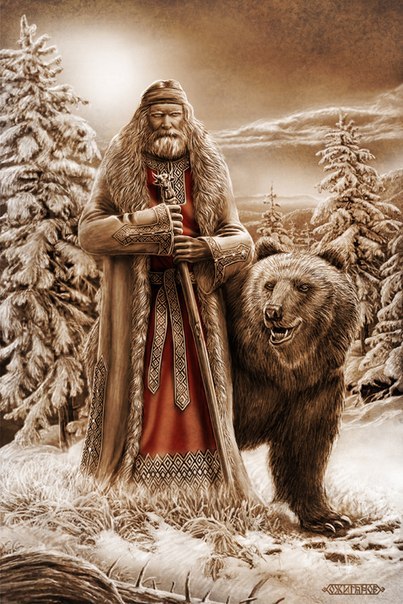
Chernobog
“Also spelled as Czernobog, Tchernobog is a Slavic deity, whose name means black god, about whom much has been speculated but little can be said definitively. The only historical sources, which are Christian ones, interpret him as a dark, accursed god, but it is questionable how important (or evil) he was really considered to be by ancient Slavs.
About Chernobog, there was just one written document named Chronica Slavorum from Saxon missionary Helmold that says:
''Among Slavic people, there is one weird belief that is kept in their drinking fests and feasts. They at same time bless and curse under names of their Gods, respectively in the name of good One and evil One, saying that good things come from good God and evil comes from evil One. In their language they call evil God ''Chernobog'', or ''black God''.''


Morana
“Morana is a pagan Slavic goddess associated with seasonal rites based on the idea of death and rebirth of nature. She is an ancient goddess associated with winter's death and rebirth and dreams. In ancient Slavic rites, the death of the Goddess Marzanna at the end of winter becomes the rebirth of Spring of the Goddess Vesna representing the coming of Spring.”
“In modern times the rituals associated with Marzanna have lost their sacred character and are a pastime – an occasion to have fun and celebrate the beginning of spring. The tradition is usually celebrated around the spring equinox (March 21). Usually schoolchildren and young people participate in the celebrations alongside local folklore groups and other residents. A procession consisting of men, women and children carries handmade Marzanna to the nearest river, lake or pond. The participants sing traditional songs and throw effigies of Marzanna into the water. Sometimes the effigies are first set on fire, or their clothes are torn. On the journey back to the village the focus falls on the copses, adorned with ribbons and blown egg shells. The procession, still singing, returns to the village."
“Researchers emphasise that Marzanna functioned not merely as a symbol of winter, but also as a Slavic goddess. Marzanna's later association with death (in some regions Marzanna is called Death Crone) trivialized the importance of the goddess, who was the lady of not only death, but also life, and commanded the natural world.”
“Drowning Marzanna in water (an element of high importance in season-related folk celebrations) is understood as the goddess' symbolic descent into the underworld, to be reborn with next winter. Some researchers underline the sacrificial character of this ritual and suggest that Marzanna is sacrificed in order to appease Winter. The authors of Wyrzeczysko propose that Marzanna is sacrificed to the demons of water, whose favour was necessary to ensure a plentiful harvest in the coming year.”

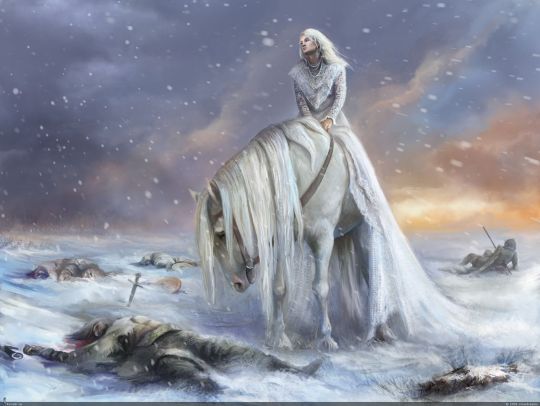

Karna
“Goddess of the funerals, personifying tears. She is compared to the Indic Karna.”
“Yet another goddess of death, the ancient Karna is depicted as a young woman with black hair and bright red clothes. She is said to be the daughter of the goddess Lada. She spends most of her life down in the underworld. Some sources claim her to be related to Marzana (the goddess of winter and death, it might be a region differential)”
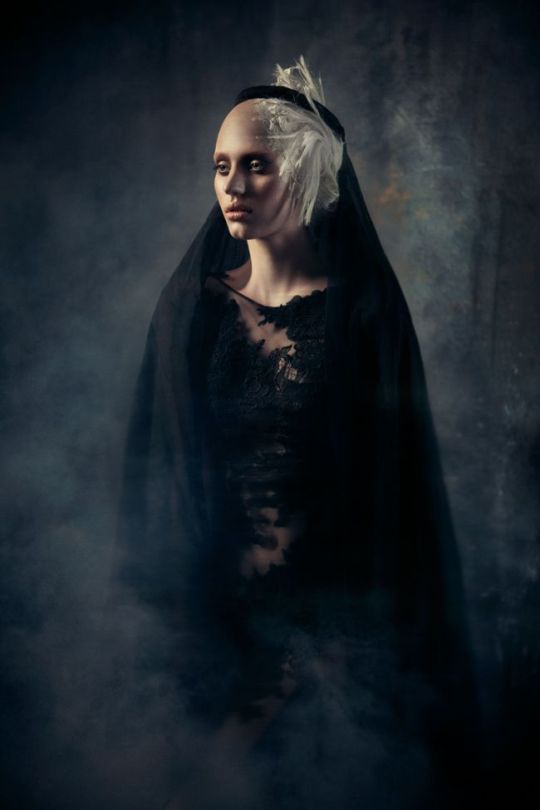
Oźwiena
“Goddess of the echo, and generally of voice and oral communication.”
“She was a companion of the god Veles, the goddess of echo. Some specialists in mythology connect her with Greek nymph Echo. She was also the goddess of gossip. According to the legend, it was impossible to her keep something she heard as a secret. Whatever you told her, she shared it. However, if she liked someone, she spoke only good things, but when someone became her enemy, she spoke all the bad things about this person. Moreover, Oźwiena loved glory, fame and listening to the stories.”

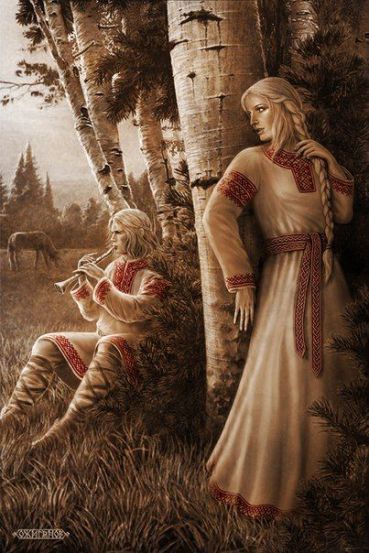
Flins /Hela
“Hela, the death goddess, is represented with a lion head with an outstretched tongue. As Myda, an aspect or another name of hers, she is represented as a crouching dog.”
“God of death who may be a Wendish name of Veles, although the iconography is rather different. He is sometimes represented as a skeleton with a lion upon his shoulder, holding a burning torch in his hand, and placing a foot on a large pebble. In other cases he is represented as an old man, with the same attributes of the skeleton, except for a flint instead of a pebble. His cult was widespread in Lower Silesia, Lusatia and Saxony.”

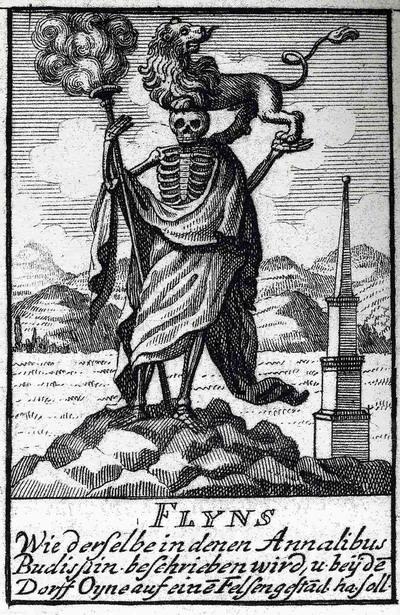

Morok
“Morok, literally “Darkness” in Russian, is a concept that has been deified in modern Slavic Native Faith (Rodnovery). He is the god of lie and a deceit, ignorance and errors. At the same time, he is a keeper of ways to the truth, hiding such ways to those who pursue truth for vanity and selfishness. He has a twin brother, Moroz (“Frost”), and they switch into one another at will.”

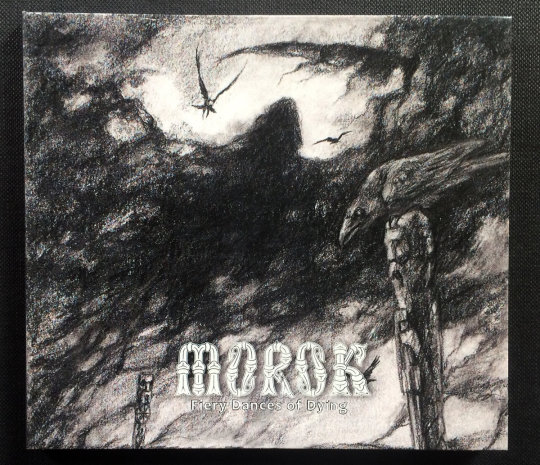
Nemiza
“God who cuts the thread of life, sometimes represented as a male with four beams around his head, one wing, and on his chest a dove with outstretched wings, and sometimes represented as a naked female with an eagle by her side gazing up to her. Nemiza was regarded both as a calamity for bringing death, and as a beneficial figure for introducing the soul to a new life.”

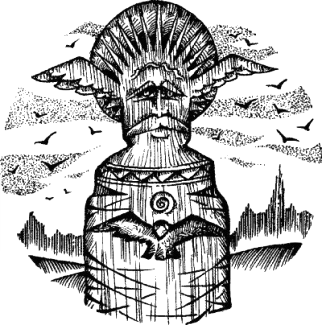

Ny
“Ny is the god of the underworld who acts as psychopomp, that is to say the guide of the souls into the underworld. He is associated with subterranean fire and water, snakes and earthquakes. Peklabog or Pekelnybog is another name of the god of the underworld, and he has been compared to the Indic Shiva. Etymologically, the word peklo means "pitch", and after Christianisation, its meaning became that of "hell", often personified as the Devil, and pekelnik any being of hell.”
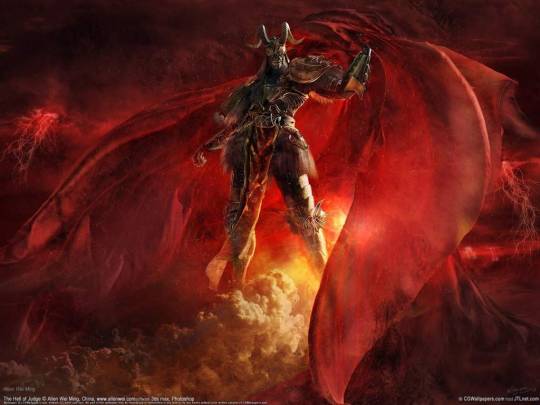
https://www.slavorum.org/veles-the-slavic-shapeshifting-god-of-land-water-and-underground/
https://mythology.wikia.org/wiki/Chernobog
https://en.wikipedia.org/wiki/Morana_(goddess)
https://en.wikipedia.org/wiki/Deities_of_Slavic_religion
https://aminoapps.com/c/pagans-witches/page/blog/dark-slavic-gods-goddesses/xpdX_JM6s2uVLKp7bdXgQmXmqBXQQrvBvG
https://culture.pl/en/article/what-is-known-about-slavic-mythology
22 notes
·
View notes